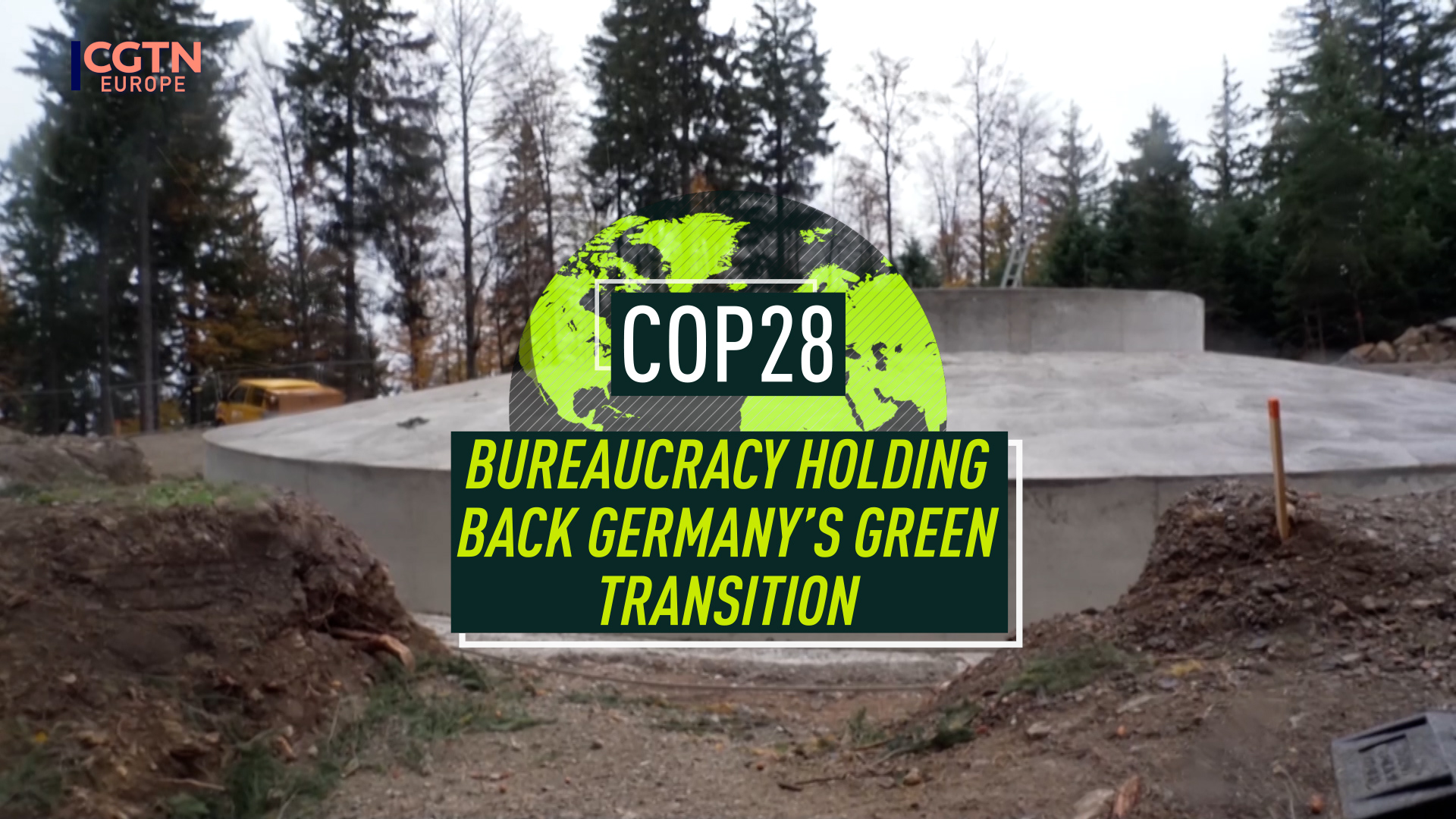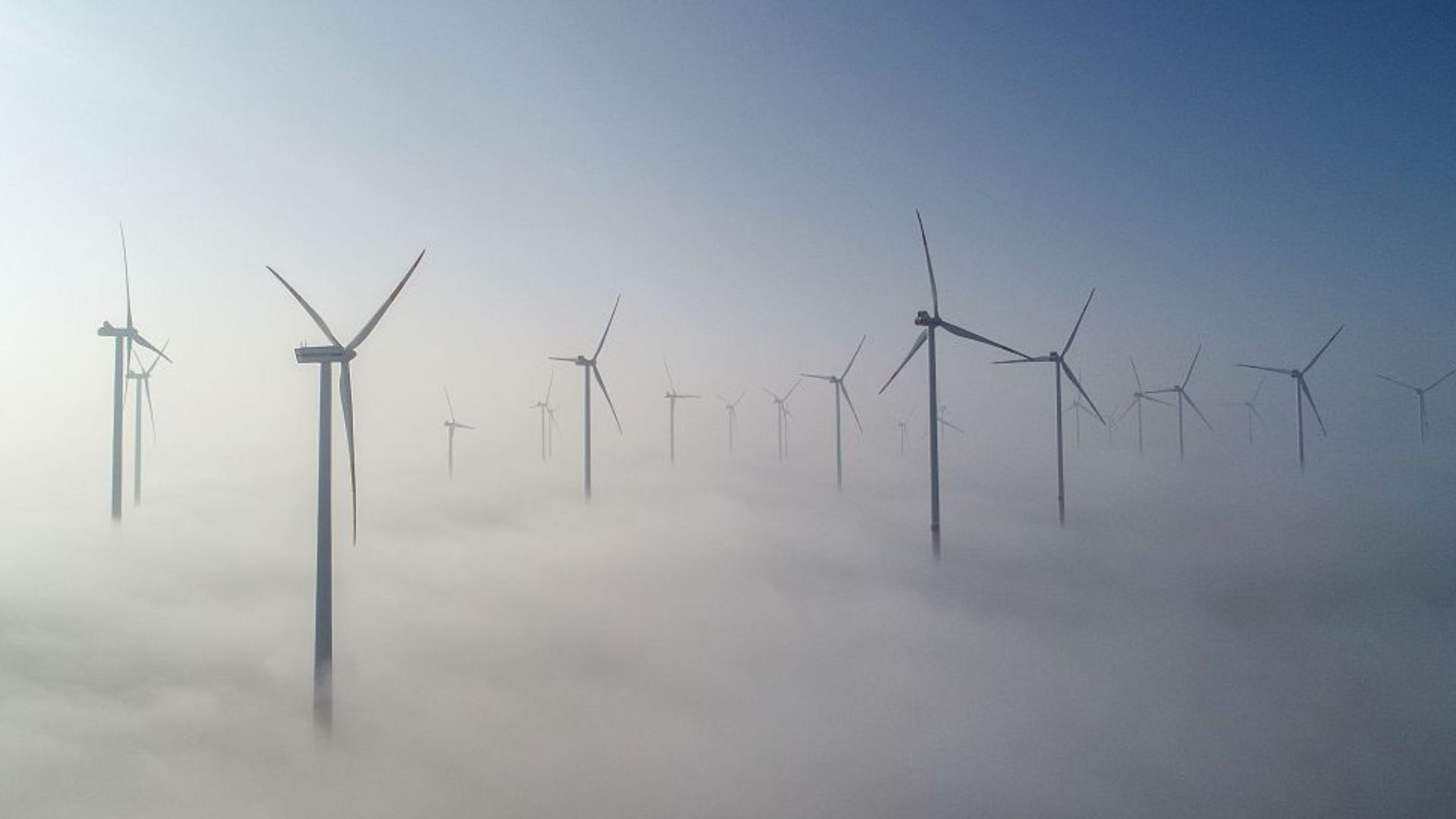03:05

Germany has big ambitions when it comes to its green energy transition. By 2030, the country hopes to fuel 80 percent of its energy needs with renewables. One way of doing that is through the power of wind. However, some storms have been brewing along the way, obstructing its development.
According to the Munich Environmental Institute, only around two thirds of this year's target of 3.9 gigawatts of new installed wind energy capacity has been reached, meaning annual targets will need to increase if Germany is to achieve its goals, says the Institute's Climate and Energy Policy Advisor, Leonard Burtscher.
"The wind energy target for onshore wind production (in Germany) is 115 gigawatts by 2030," he told CGTN. "That would be a doubling of the installed capacity compared to what we have now. We are currently at 2.9 gigawatts of added power, so that's how far off we are this year."
The big problem? "Bureaucracy" says Burtscher.

The future of wind power generated at plants like this one in Jacobsdorf remain foggy. /Patrick Pleulclose/dpa
The future of wind power generated at plants like this one in Jacobsdorf remain foggy. /Patrick Pleulclose/dpa
Lengthy and complex procedures
"The necessity for expanding wind energy very fast has in principle been heard but it's not necessarily being lived. There was real political pressure to stop or to block wind energy," argues Burtscher.
While a push is being made by the federal government to increase capacity, it would appear that state governments, particularly in the south of the country, have a different opinion of wind energy.
More support needed
In the southern state of Baden Wurttemberg, Thomas Schuwald from the Freiburg Green Energy Group told CGTN that it will take a full decade to get their latest wind turbine, capable of providing electricity to some 4000 people annually, contributing to the local grids.
He said: "From the initial idea for such a project, from the location to approval, (it) usually takes between three and five years, sometimes even longer. We started thinking about it back in 2015/16 and only had approval a year and a half ago and now have to wait another two years until the construction is finished."
Schuwald says that while the local and regional authorities have been very constructive, "the state of Baden-Württemberg is not there" and have been delaying the process.
Burtscher argues that Bavaria's so called 10H regulation, which requires that the distance between a wind turbine and the nearest house has to be ten times its height "leaves less than one percent of the total area of Bavaria available for wind power and that's just not enough.”
Southern states holding back wind energy growth
However, German Chancellor Olaf Scholz, who has set an ambitious target of building five new wind turbines a day, has criticised the slow rollout of wind power in the south of the country, calling it "depressing."
Federal and even EU acceleration regulations have been implemented, which aim to expedite the production of wind energy and clear certain bureaucratic jams, such as the federal definition of where wind energy turbines can be built.
Additionally, while the north of Germany is far more active in their wind energy production, there are many challenges when trying to share that energy, leading to the south having to purchase energy from abroad.
"That's exactly what we want to try and prevent" concludes Schuwald.

Subscribe to Storyboard: A weekly newsletter bringing you the best of CGTN every Friday